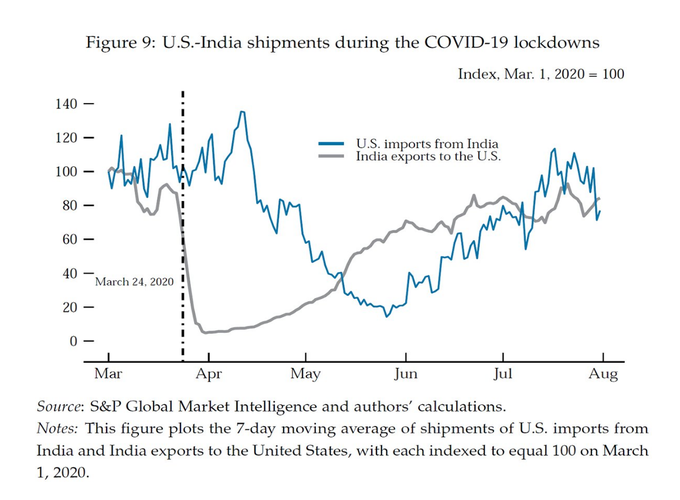 Aggregating non-traditional data for high frequency indicators
Aggregating non-traditional data for high frequency indicators
 Aggregating non-traditional data for high frequency indicators
Aggregating non-traditional data for high frequency indicators
We evaluate high-frequency bill of lading data for its suitability in international trade research. These data offer many advantages over both other publicly accessible official trade data and confidential datasets, but they also have clear drawbacks. We provide a comprehensive overview for potential researchers to understand these strengths and weaknesses as these data become more widely available. Drawing on the strengths of the data, we analyze three aspects of trade during the COVID-19 pandemic. First, we show how the high-frequency data capture features of the within-month collapse of trade between the United States and India that are not observable in official monthly data. Second, we demonstrate how U.S. buyers shifted their purchases across suppliers over time during the recovery. And third, we show how the data can be used to measure vessel delivery bottlenecks in near real time.